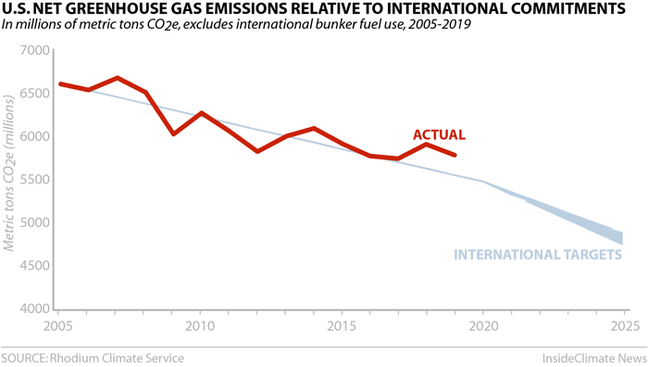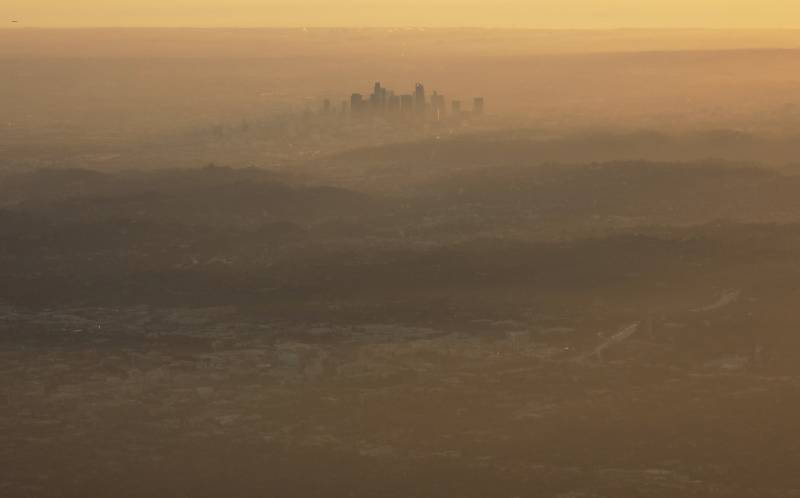The 2019 drop was driven by a nearly 10 percent fall in emissions from the power sector, the biggest decline in decades, according to Rhodium.
And the story there is all about coal.
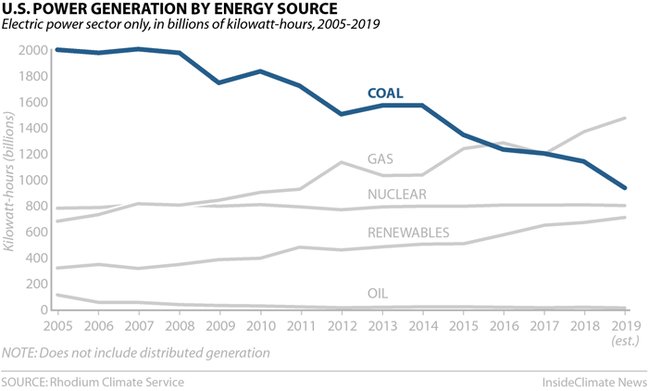
Coal generation in the U.S. fell by 18 percent last year, the largest annual decline on record, according to Rhodium. Another study, published in December, found a smaller but still dramatic drop for coal generation last year.
Renewable power sources such as wind and solar have seen sharp increases in recent years as their costs of generation have fallen below that of coal. But natural gas has replaced far more coal generation capacity than renewables.
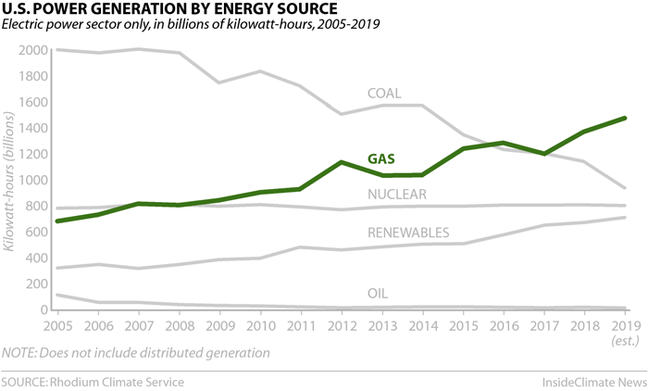
The fracking boom sent natural gas prices plummeting, helping drive a rapid shift by electric utilities away from coal. But while burning gas is cleaner than burning coal, natural gas power generation still emits carbon dioxide.
[Read more about how the natural gas rush is driving a global rise in fossil fuel emissions.]
Emissions from natural gas power generation increased by more than 40 million metric tons last year, compared to a drop of 190 million metric tons for coal, according to Rhodium. That does not include emissions during oil and gas production, such as methane, a potent short-lived climate pollutant, which are counted separately (see below).
But the good news on emissions cuts ends with the power sector.
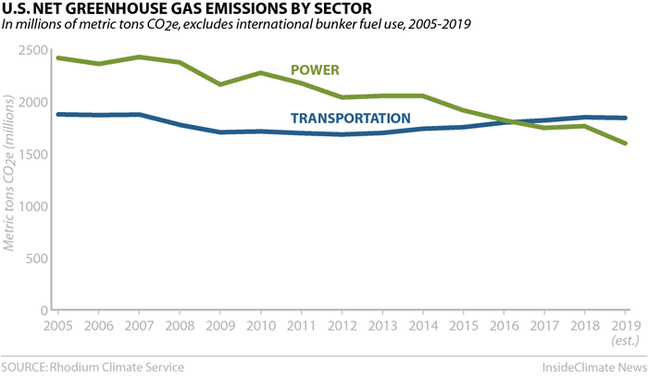
Transportation is now the largest source of greenhouse gas emissions in the U.S., and emissions were essentially flat in 2019, declining by 0.3 percent.
That does represent a shift after several years of small increases, but emissions remain about where they were before the Great Recession started in 2007. Hannah Pitt, a senior analyst with Rhodium, said improved fuel efficiency is helping slow or end the rise in emissions, even as people fly and drive more.
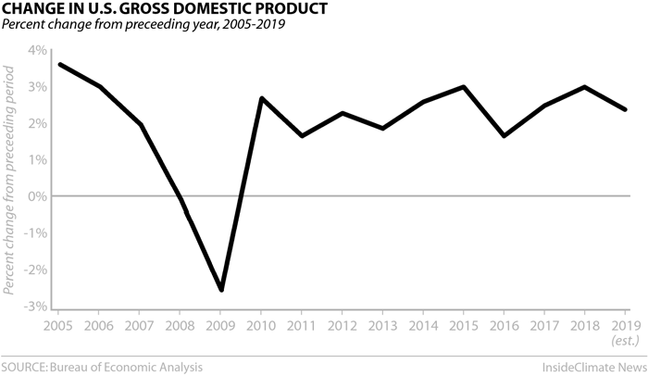
Some of the change from 2018 to last year can be explained by the economy.
In 2018, U.S. gross domestic product, or GDP (the value of all final goods and services produced in the country), expanded by a relatively robust 2.9 percent. But the first three quarters of last year saw slower GDP growth of 2.3 percent, according to Rhodium. A slower economy tamped down growth in domestic air travel and also in shipping by trucks.
Yet emissions from other sectors of the economy continued to rise.
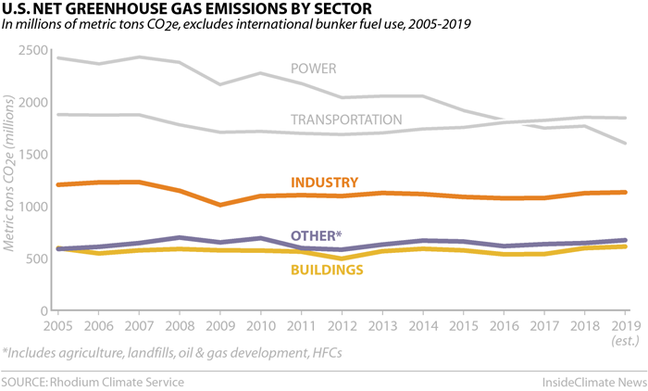
Emissions from industry rose slightly last year and are now greater than those from coal-fired power plants. Emissions from buildings were up, too. And emissions from other sectors of the economy collectively grew by more.
Much of the growth within the “other” category came from methane emitted by oil and gas production. The U.S. is now the world’s top oil and gas producer, and it is projected to continue expanding output in coming years. Meanwhile, the Trump administration has started the process of pulling out of the Paris accord, and it has been working to roll back regulations adopted by the Obama administration that limited methane emissions from new and existing oil and gas wells.
These other, harder to tackle sectors are an increasingly important piece of the story, and Pitt said federal policies will have to target them if the U.S. is to hit the targets it agreed to as part of the Paris climate agreement.
“In order to meet those, we would need to really be seeing some pretty sizable annual declines in emissions that we’re not seeing now,” she said. “And if we’re relying purely on the power sector market dynamics to get there, I don’t see that happening.”
